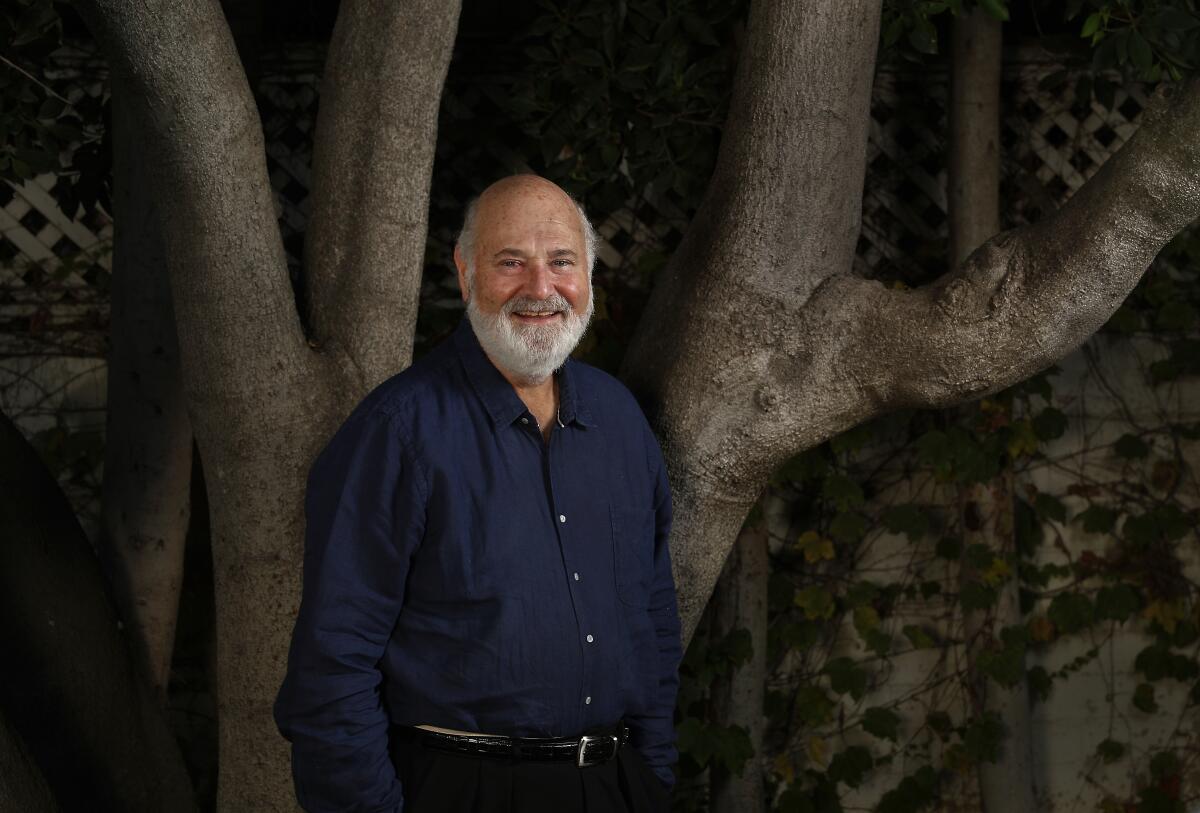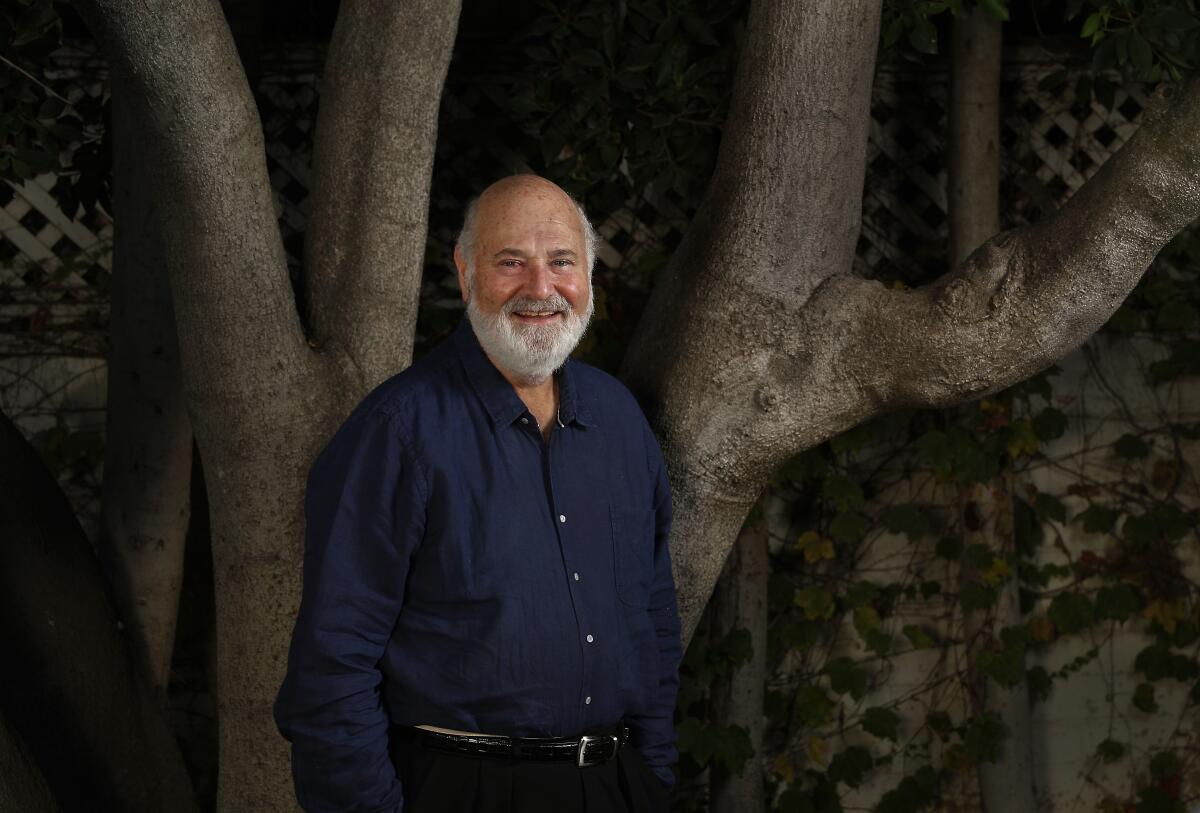With his Rob Reiner insults, Trump showed he’s literally an anti-Christ
Let the annals of this country show it was the murder of a Jewish couple on the first night of Hanukkah that showed how profoundly un-Christian Donald J. Trump is once and for all.
The prosecution rests, and there can no rebuttal: We are a nation led by President Meathead.
Except unlike the character of the same name famously played by Rob Reiner in “All In the Family,” our Meathead in chief lacks any sense of moral decency.
The weekend saw the tragic deaths of Hollywood legend Reiner and his wife, Michele. Their son, Nick Reiner, is currently in jail without bond and is facing murder charges. Normal people mourned the loss of a couple who delighted and improved the world with their creative and political work while trying to free Nick from the ravages of drug abuse and mental illness for most of his adult life.
Our president, of course, is not normal. He’s a weirdo who gets off on being mean. If there was a CruelHub, he’d be on it daily.
And so on the day after Romy Reiner found her parents’ bodies at their Brentwood home, Trump posted on social media that they died not due to stab wounds but “reportedly due to the anger [Rob] caused others through his massive, unyielding, and incurable affliction with a mind crippling disease known as TRUMP DERANGEMENT SYNDROME.”
The president doubled down on his crocodile tears to reporters at the Oval Office the day after, claiming Reiner “was very bad for our country” without offering any proof and describing the director of big-hearted film classics like “When Harry Met Sally…” and “The Princess Bride” as “deranged.”
We’re in the middle of the holiday season, a time when people traditionally slow down their lives to take stock of their blessings during the coldest and darkest time of the year and try to spread cheer to friends and strangers alike.
But goodwill is simply impossible for Trump. Where a moment calls for grace, he offers ethical filth. When tragedies inspire charity in the hearts of good people, the president makes it about himself.
While Trump demanded all Americans speak no ill of Charlie Kirk in the wake of his assassination, he invited all to ridicule Reiner, whose apparent sin was criticizing our eminently criticizable president.
While everyone is rightfully focusing on the ugly attacks Trump launched against Reiner and his wife, also telling about the president’s soul was the address he gave at a White House reception marking Christmas and the start of Hanukkah hours before news broke of the Reiners’ murder.
Earlier that day, two gunmen killed 15 people who were celebrating Hanukkah at Bondi Beach near Sydney, Australia, in what authorities are describing as an antisemitic attack. The night before, someone killed two people at Brown University in a case that’s yet to be solved.
Trump offered lip service to those massacres before turning to the reason for the season:
Trump.

Actor, writer, director, producer and activist Rob Reiner photographed at his home in Brentwood in 2017.
(Mel Melcon / Los Angeles Times)
He insulted his predecessor, Joe Biden, and claimed his disastrous tariffs were paying off. He brought up Bryson DeChambeau so the U.S. Open golf champion could gush about how the president was a “great golfer [and] better human being.” The president plugged his planned arch for the nation’s capital that he claimed will “blow … away” the Arc de Triomphe in Paris. He bragged about winning over Latinos during the 2024 election — without mentioning that’s he’s already losing them, fast — and blasted the “fake news” for not appreciating the Christmas decorations of First Lady Melania Trump.
You would think Trump was running for president again instead of marking two important religious holidays. But Trump was being spiritual in a sense: he was practicing his true faith, which is smite.
The word and its conjugates appear hundreds of times in the Old Testament, spoken by an admittedly “jealous” God as he instructs the Israelites on how to treat their enemies, or used as a threat against the Israelites if they stray from his commands.
If Trump and his henchmen and henchwomen ever read the Bible, you might well bet they read only the parts that involved smiting.
Secretary of Defense Pete Hegseth — he of the medieval cross chest tattoo — continues to play Solomon as he authorizes the bombing of boats off the coasts of South America that he insists are carrying drugs while offering no justification other than his will that it be done. Immigration agents indiscriminately pick up citizens and noncitizens alike in pursuit of remigration, the far-right movement to make minority groups return to their ancestral countries in the name of white makes right.
Twice, the Department of Homeland Security has invoked the Book of Isaiah in social media campaigns to justify its scorched-earth approach to booting people from the country. Specifically, they have cited a verse where the prophet tells God “Here I am, send me” as Yahweh calls for a messenger to warn heretics of the hell he will rain down on them unless they repent. The most recent clip starred Border Patrol commander at large Gregory Bovino, he who has spread Trump’s fire-and-brimstone gospel of deportation.
Smiting and annihilation are the Gospel of Trump and they do play a big role in the Bible. But their ultimate redemption for Christians is what we’re gearing up to celebrate next week: the birth of Christ, the Son of God who came to the world to preach one should love thy enemy, bless the meek, renounce wealth and a whole bunch of other woke stuff.
Trump may not be the literal anti-Christ, but Trump sure is anti-Christian. He stands for and embodies everything that Jesus decried.
More and more Christian thought leaders are starting to understand this about Trump the more he rages. In the wake of Trump’s selfish sliming of the Reiners, Christianity Today editor at large Russell Moore slammed his “vile, disgusting, and immoral behavior” while conservative commentator and longtime Trump apologist Rod Dreher wrote “something is very, very wrong with this man.”
That’s a start. But more evangelical Christians, 80% of whom voted for him in the 2024 election, need to finally repent of blindly supporting him. They, more than any other group, have excused Trump’s sins.
They often compare him to major figures from the Bible and Christian heroes from the past — King David, Cyrus the Great, Constantine — who were imperfect but still did God’s will.
That’s laughable. This man isn’t just imperfect. We’re all that.
No, Trump is more than imperfect. He is a throbbing mass of malevolence, turned up — to reference Reiner’s “This Is Spinal Tap” — to 11.
